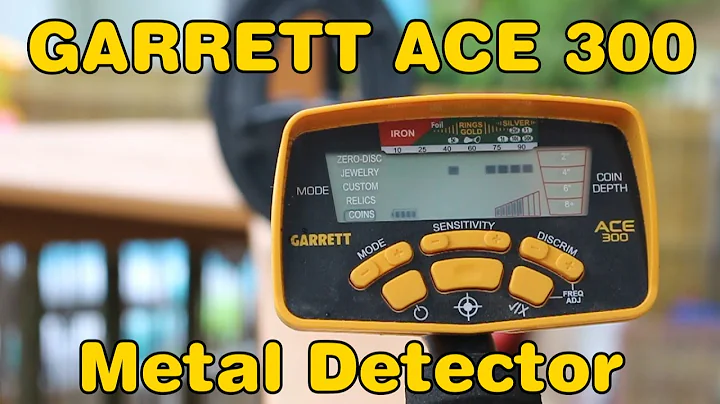Master the Mechanics of Combat in Baldur's Gate 3
Table of Contents
- Introduction
- Attack Rolls
- What is an Attack Roll?
- Critical Hits
- Determining Success or Failure
- Factors Affecting Attack Rolls
- Advantage and Disadvantage
- Target Conditions
- Damage Rolls
- Conducting a Damage Roll
- Determining Damage Dealt
- Damage Types
- Additional Damage Features
- Spellcasting and Attack Rolls
- Attack Roll Spells
- Saving Throw Spells
- Spell Casting Ability Modifiers
- Examples of Attack Rolls and Damage Rolls
- Ranger's Ranged Attack
- Wizard's Firebolt Attack
- Cleric's Sacred Flame Attack
- Saving Throws against Enemy Attacks
- Conclusion
Introduction
In this article, we will explore the mechanics behind attack rolls and damage rolls in combat. These concepts can be confusing for newcomers to Dungeons & Dragons-based games like Baldur's Gate 3. We will discuss the basics of attack rolls and how they determine success or failure in hitting a target. We will also delve into the intricacies of damage rolls and the factors that influence the amount of damage dealt. Additionally, we will examine the role of spellcasting in relation to attack rolls and saving throws. Throughout the article, we will provide examples to illustrate these concepts and help you better understand the mechanics behind combat in Baldur's Gate 3.
Attack Rolls
What is an Attack Roll?
An attack roll in Baldur's Gate 3 is a roll of a 20-sided die (1d20) that determines whether you hit or miss your target. When you make an attack, you roll the d20 and add various modifiers, such as your proficiency bonus and ability modifiers, to the result. The total determines the outcome of your attack. If the result equals or exceeds the target's armor class (AC), you hit and proceed to the damage roll. On the other hand, if the result falls short of the target's AC, you miss, and no damage is dealt.
Critical Hits
A critical hit occurs when you roll a natural 20 on your attack roll. This result represents a perfect strike, resulting in double damage dealt to your target. Critical hits can be game-changers, turning the tide of battle in your favor.
Determining Success or Failure
Success or failure in an attack roll is determined by comparing your total attack roll result to the target's armor class. If your result is equal to or higher than the target's AC, you hit and proceed to the damage roll. Conversely, if your result is lower than the target's AC, you miss, and no damage is dealt.
Factors Affecting Attack Rolls
Several factors can influence your attack rolls in Baldur's Gate 3. These factors either increase your chances of success (advantage) or decrease your chances of success (disadvantage). Additionally, certain target conditions can affect your attack roll outcome.
Advantage and Disadvantage
Advantage occurs when you have favorable circumstances that improve your chances of hitting the target. When you have advantage, you roll two d20s and use the higher result for your attack roll. Conversely, disadvantage arises when unfavorable conditions hinder your chances of hitting the target. In this case, you roll two d20s and use the lower result for your attack roll. It is important to strive for advantage whenever possible, as it significantly increases your chances of success.
Target Conditions
Certain conditions, such as shadows or cover, can affect your attack roll outcome. For example, if your target is obscured by shadows, indicated by a red arrow and lower success percentage, your chances of hitting the target are reduced. To mitigate this, you can manipulate the environment, such as casting a spell to light up the area and remove the disadvantage. Similarly, positioning yourself behind the target or taking advantage of specific target vulnerabilities can provide advantages, such as the backstab condition, increasing your chances of success.
Damage Rolls
Conducting a Damage Roll
Once you successfully hit your target with an attack roll, a damage roll is conducted to determine the amount of damage you deal. The damage roll depends on the weapon or spell you are using. Each weapon or spell has specific damage dice and damage types associated with it. For example, a longsword may deal 1d8 slashing damage, while a fireball spell may deal 8d6 fire damage.
Determining Damage Dealt
To determine the damage dealt, you roll the appropriate damage dice and add any modifiers that apply. For example, if you roll a 1d8 for damage and have a strength modifier of +2, your total damage would be the result of the dice roll plus the modifier. It is important to note that some features or abilities can further modify or enhance the damage dealt, such as having proficiency with a weapon or utilizing additional damage features specific to a class or subclass.
Damage Types
Damage types in Baldur's Gate 3 can vary and have different effects in combat. Common damage types include slashing, piercing, bludgeoning, fire, cold, acid, lightning, thunder, poison, and radiant. Understanding the damage types is crucial for exploiting enemy weaknesses and optimizing your damage output.
Additional Damage Features
Certain character classes and subclasses have additional damage features or abilities that can further enhance their damage output. For example, a hunter ranger may have a feature called Colossus Slayer, which grants bonus damage to a wounded target. These additional features provide opportunities for strategic decision-making and customization in combat.
Spellcasting and Attack Rolls
In Baldur's Gate 3, spellcasters have spells that require either an attack roll or a saving throw to determine their effectiveness.
Attack Roll Spells
Some spells, such as Firebolt, require an attack roll to determine whether they hit the target. This is similar to making an attack with a weapon. Spell attack rolls are influenced by the caster's proficiency bonus, ability modifier relevant to the spellcasting class, and any additional modifiers specific to the spell or character.
Saving Throw Spells
Other spells, like Sacred Flame, require the target to make a saving throw instead of the caster making an attack roll. The spellcaster specifies the type of saving throw required, such as Dexterity, and the target must roll a d20 and add their relevant modifiers to resist the spell's effects. The spell's difficulty class (DC) sets the threshold the target must meet or exceed to successfully resist the spell's effects.
Spell Casting Ability Modifiers
When making an attack roll or determining the saving throw DC for a spell, spellcasters utilize their spellcasting ability modifier. This modifier is specific to the character's casting class and is added to the attack roll or spell DC calculation to reflect the caster's magical prowess.
Examples of Attack Rolls and Damage Rolls
To further illustrate the concepts of attack rolls and damage rolls, let's examine a few examples of combat scenarios in Baldur's Gate 3.
Ranger's Ranged Attack
Suppose a ranger character attempts a ranged attack with a heavy crossbow. The action involves rolling a d20, adding the character's proficiency bonus, dexterity modifier, and any additional modifiers based on class features or abilities. If the attack roll result meets or exceeds the target's AC, damage is rolled using the weapon's damage dice, modifiers, and any additional damage features or abilities.
Wizard's Firebolt Attack
In another scenario, a wizard character casts the Firebolt spell, which requires an attack roll. The attack roll is conducted similarly to a weapon attack, but the modifiers and ability used may differ based on the spellcasting class and spell requirements.
Cleric's Sacred Flame Attack
A cleric character uses the Sacred Flame cantrip, which requires the target to make a Dexterity saving throw. The DC for the saving throw is determined by the cleric's spellcasting ability modifier and proficiency bonus. If the target fails the saving throw, damage is rolled, and the type and amount of damage are dependent on the spell's description.
Saving Throws against Enemy Attacks
Lastly, the article explores examples of saving throws when facing enemy attacks. Saving throws are used to resist the effects of enemy actions, such as an enemy's pounce or claw attack. The target rolls a d20 and adds relevant modifiers to either meet or exceed the enemy's DC. Successful saving throws mitigate the effects of the enemy's attack.
Conclusion
Mastering the mechanics of attack rolls and damage rolls is crucial for success in combat in Baldur's Gate 3. Understanding how to maximize your chances of hitting targets and dealing optimal damage can turn the tide of battle in your favor. Whether you are swinging a sword, casting a spell, or evading enemy attacks, being familiar with the intricacies of attack rolls and damage rolls will greatly enhance your gameplay experience. Keep practicing, experimenting, and exploiting the game's mechanics to pave your path to victory.
[Resources]







